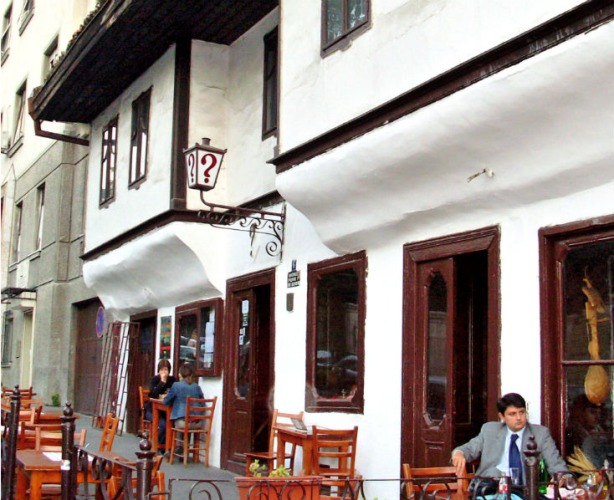

Serbia had the first “kafana” (coffee house) in Europe an entire century before London, Marseilles, Vienna and Leipzig. The telephone rang for the first time in a kafana, and the first electric street light was also lit in front of it.
Serbs have centuries-old tradition of drinking black coffee, and it was a tradition inherited from the time of the Turkish reign in this region.
The first “kafanas” (coffee houses) were opened in the East, and this “institution” was introduced here by the Ottoman conquerors.
It is quite certain that over time Turks opened also the first kafanas besides khans and caravanserai (caravansara in English), roadside inns where travelers could rest and recover from the day’s journey.
After Belgrade was surrendered to the Sultan Suleiman the Magnificent on August 28th, 1521, the very next year the first recorded kafana in Serbia was opened somewhere in Dorćol in Belgrade, and there only black Turkish coffee was served.
Today there is no written data on where this coffee house was located, how it looked, or who the owner was, but based on the assumptions and the interiors of the later Turkish coffee houses, it is assumed that it was a building that could accommodate a larger number of people with no tables, instead there were minderluks (a type of a Turkish sofa) covered with colorful Turkish carpets, and the coffee was served in smoking ibriks (coffee pots).
Unlike today’s coffee shops, nothing but black Turkish coffee was served in these first kafanas, and with coffee guests could only get narghile (hookah, waterpipes) and chibouks. Back then in 1522 the first coffee house in Serbia earned its historical significance as the oldest kafana in Europe, since the first coffee houses in London, Marseilles, Vienna and Leipzig were opened an entire century later.

During centuries the concept of kafana (coffee house) changed also the lifestyle in town, and people went to kafanas not only to eat and drink, furthermore, kafana became the center of all significant events.
News was spread here, business deals were concluded, marriage agreements were made; in corners of kafanas governments were pulled down and new countries were created. Even Miloš Obrenović returned to power for the second time in a kafana, “The Great or Prince’s Breewery”.
The significance of kafana in our region is testified by the historical data – these were the places where the audience saw the first film, the first theatre plays, the first book fair was organized in a kafana.
While the streets were lighted with lanterns, the first electric street light was lit in 1880 at the corner of Kolarčeva Street and Makedonska Street, in front of the kafana “Proleće” (Spring), later named “Hamburg”. Today symbolically this street light stands in front of the building of EDB Elektrodistribucija.
Also the first phone rang in the kafana “Tri lista duvana” (Three tobacco leaves) at the corner of Kneza Miloša Street and King Aleksandar Boulevard. In the famous “Kafana ?” i.e. “Znak pitanja” (Question mark), the first pool party was played in 1834 in Belgrade.
However, there is an old manuscript that speaks of a similar “institution” from the time of the Byzantine Emperor Justinian, who was born on the territory of Serbia. According to Dr Vidoje Golubović, there are traces of existence of some kind of kafana in the 6th century Singidunum, today’s Belgrade.
Byzantine writer and traveler Procopius, while describing Singidunum, writes about pandokeona, a kind of inns where also the entire social and commercial life of the city took place.
Those were quadrangular buildings with one upper floor and a spacious atrium and a drinking fountain in the center of it, while roofed halls leading to separate rooms surrounded the entire building, and the central hall was used for serving meals and drinks.
Kafanas as meeting places of artists and writers started being opened in Belgrade from the year of 1830. They were often named spontaneously and symbolically.
To date the most famous kafanas are “Tri šešira” (Three hats) and “Dva bela goluba” (Two white pigeons) in Skadarlija, kafana “?” in Kralja Petra Street across the street from Saborna Church, and once famous kafana “Dardaneli” located between Čika-Ljubina Street and Vasina Street, that doesn’t exist anymore.
Kafana, mehana, bircuz, birtija, for centuries has had a high status and therefore it’s no wonder that it was one of the most significant social institutions.
Photo: Orjen/Wikimedia commons
Related Articles


Winter Starts Here: Serbia’s Magical December
December 1, 2025







